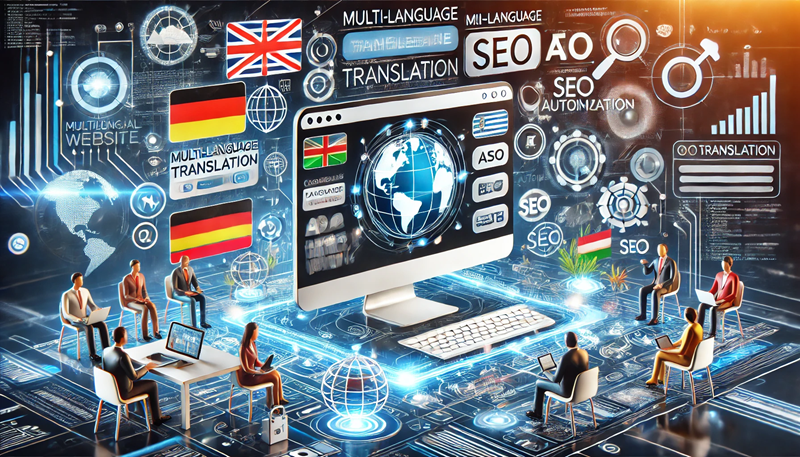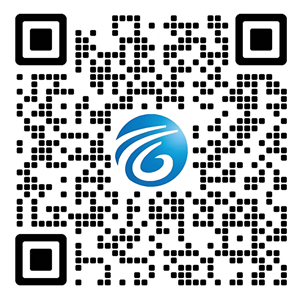In the global business environment, multilingual support for enterprise websites has become an inevitable trend. However, traditional translation methods no longer meet the needs of modern users for accurate content and smooth experiences. With the development of Artificial Intelligence (AI), Machine Translation (MT), and localization automation tools, multilingual website development is evolving from simple text translation to smart localization, providing businesses with more efficient and precise global solutions. This article will explore the latest trends in this transition and its impact on enterprise brand globalization.

1. Evolution from Traditional Translation to Smart Localization
(1)Limitations of Traditional Translation
In the past, enterprise multilingual websites typically used manual translation or static content-based translation plugins. These methods have the following issues:
- High Translation Costs: Manual translation is time-consuming and costly, especially for websites with large-scale content updates.
- Difficult Maintenance: Different language versions of content need to be updated independently, increasing management complexity.
- Insufficient SEO Optimization: Traditional translations often fail to adapt to local search habits, leading to poor SEO performance on multilingual pages.
(2)Core Features of Smart Localization
Smart localization is based on AI, big data, and automation technologies, not only achieving language conversion but also optimizing content to align with the target market’s culture and user habits. The main features include:
- AI-driven Machine Translation (MT) + Human Post-editing (MTPE): Using neural network translation technologies like Google Translate and DeepL to improve translation accuracy, followed by human optimization of key content.
- Localization Automation: Using automation tools like Smartling and Lokalise to capture, translate, and update text efficiently.
- SEO-based Content Optimization: Smart localization systems adjust keywords and content based on the search habits of different markets to improve the SEO performance of each language version.
- Dynamic Translation and Real-time Updates: Using API interfaces to automatically sync and translate website content, reducing manual intervention.
2. Latest Trends in Multilingual Website Development
(1)AI and Neural Machine Translation (NMT) Leading the Localization Process
Neural Machine Translation (NMT) uses deep learning technologies to significantly improve translation quality. For example, AI translation tools like DeepL can understand context and generate more natural translations. Combined with human post-editing (MTPE), companies can reduce costs while ensuring translation quality.
Case Study: A cross-border e-commerce platform adopted an AI translation + human optimization approach to translate product descriptions into 10 languages, increasing conversion rates by 30%.
(2)Multilingual SEO Optimization
Smart localization is not just about language translation; it also includes SEO optimization to ensure that different language versions of the page rank better in search engines like Google, Bing, Yandex, and Baidu. Key techniques include:
- Hreflang Tags: Ensuring search engines correctly index and display different language versions of a page.
- Local Keyword Optimization: Using AI to analyze search trends in various countries and optimize titles, meta descriptions, and content keywords.
- Automatically Generated Localized URLs: For example,
example.com/fr/(French),example.com/de/(German), improving website's regional relevance.
(3)API-driven Automated Translation Management
Businesses can integrate APIs with Translation Management Systems (TMS) to achieve real-time translation and synchronization of website content. For example:
- WPML (WordPress Multilingual Plugin): Integrated with DeepL, Google Translate API for automatic translation.
- Smartling, Crowdin: Supports multiple CMS systems and can automatically capture new content and localize it.
- AI-assisted Content Rewriting: AI can automatically adjust marketing copy for different markets, making it more culturally relevant.
(4)Multilingual Localization of Social Media and Short Video Content
With the rise of short video and social media marketing, companies not only need to translate website content but also localize video subtitles and social media posts.
- AI Subtitle Translation: Automatically generating multilingual subtitles to improve the viewing experience for global users.
- Social Media Automatic Translation: Platforms like Facebook, Instagram, TikTok support multilingual content posting, increasing brand exposure.
Case Study: A cross-border brand used AI subtitle translation to rapidly spread their short video across multiple markets, increasing brand awareness by 40%.
3. How to Implement Smart Localization for Enterprises?
(1)Choosing the Right Localization Technology Solution
Businesses can choose the most suitable multilingual website development approach based on their needs:
- Small Businesses/Startups: Use WordPress + WPML plugin combined with AI translation tools for quick deployment.
- Medium-sized Businesses: Use TMS tools like Smartling, Crowdin for automated translation management to improve efficiency.
- Large Enterprises/Cross-border E-commerce: It is recommended to use custom API + AI translation + human optimization to ensure quality and scalability.
(2)Optimizing User Experience and Improving Conversion Rates
- Dynamic Content Localization: Adjusting promotional information, payment methods, customer support for different regions to increase user trust.
- A/B Testing: Testing localized content for different markets to optimize the best version and improve conversion rates.
- Real-time Customer Support Translation: Using AI translation + human support to provide seamless multilingual customer service.
4. Conclusion
Smart localization has become the mainstream trend in multilingual website development, shifting from traditional static translation models to AI-driven dynamic localization solutions, significantly improving translation quality, SEO performance, and user experience. For enterprises looking to expand into international markets, smart localization is not only a technological upgrade but also the key to enhancing global brand competitiveness.
If your business is looking for an efficient multilingual website development solution, CIDIFY offers professional smart localization solutions to help enterprises quickly expand into global markets and achieve precise customer acquisition!



